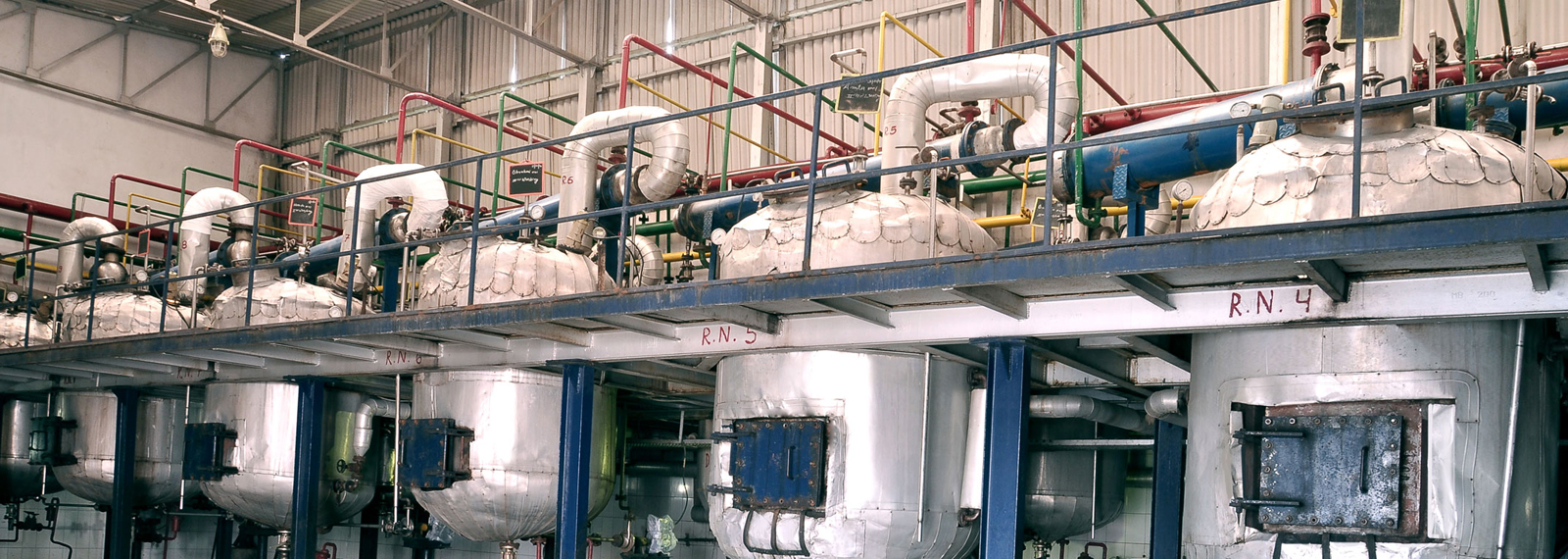Gymnema sylvestre
Gymnema sylvestre
| Sanskrit: | Meshsringi |
| English: | Periploca of the woods |
| Hindi: | Gudmar |
| Marathi: | Kavali |
| Botanical name: | Gymnema sylvestre |
| Family : | Asclepiadaceae |
| Syn: | Asclepias geminata Roxb,Periploca sylvestris Retz |
| Plant Part Used: | Fresh or Dried Leaves |
Large climbers, rooting at nodes, leaves elliptic, acuminate, base acute to acuminate, glabrous above sparsely or densely tomentose beneath; Flowers small, in axillary and lateral umbel like cymes, pedicels long; Calyx-lobes long, ovate, obtuse, pubescent; Corolla pale yellow campanulate, valvate, corona single, with 5 fleshy scales. Scales adnate to throat of corolla tube between lobes; Anther connective produced into a membranous tip, pollinia 2, erect, carpels 2,unilocular; locules many ovuled; Follicle long, fusiform1
Katu, Kashay, Dipak, Pachak, Snigdha
Sarpvishnashak, ashmari rog nashak
Dhatuparivartak, Hridayrog, Arsh, Pradaha, Kamalarog & Netraroganshaka.
The major bioactive constituents of Gymnema sylvestris are a group of oleanane type triterpenoid saponins known as gymnemic acids. The latter contain several acylated (tigloyl, methylbutyroyl etc.,) derivatives of deacylgymnemic acid (DAGA) which is 3-O- ?- glucuronide of gymnemagenin (3?, 16?, 21?, 22?, 23, 28-hexahydroxy-olean-12-ene)2. The individual gymnemic acids (saponins) include gymnemic acids I-VII, gymnemosides A-F, gymnemasaponins.

Antidiabetic , Hypoglycaemic, Hypolipidaemic , Hypocholestremic, Weight Loss
Gymnema sylvestre a plant used in the Ayurvedic medicine of India for the treatment of Diabetes mellitus has been known from antiquity also to have an antisaccharin taste effect. The active principles are glycosides (several Gymnemic acid) which shows selective anaesthetic effect1. In a study conducted on rats the feeding of powdered leaves of Gymnema sylvestris in the diet for 10 days prior and 15 days after the treatment of beryllium nitrate significantly protected the animals from the full fall of blood glucose seen in rats receiving beryllium nitrate alone. The feeding of the leaves for 25 days to normal rats did not alter blood glucose significantly. The exact mode of protective action against beryllium toxicity was not established.
Experimental studies were conducted on rats fed on high carbohydrate diet for 15 days and later rendered hyperglycaemic by injecting anterior pituitary extract 100mg/kg subcutaneously daily for ten days. These animals were treated with ethanol extract of Gymnema sylvestre at a dosage of 100mg/kg orally.
Results indicated insignificant reduction in blood sugar in normal rats, whereas significant reduction in anterior pituitary treated hyperglycaemic rats. Effect of the drug was comparable to that of tolbutamide (50mg/kg) in the hyperglycaemic rats. The drug influenced the disturbed carbohydrate metabolism in hyperglycaemic animals by limiting the carbohydrate turnover and thus inhibiting the vicious cycle of hyperglycaemia. Further studies were conducted on albino rats to establish the antidiabetic activity of Gymnemasylvestre, which was compared with other conventional indigenous oral antidiabetic drugs like Coccinia indica, Pterocarpus marsupium, Momordia charantia.
The animals were subcutaneouly injected with 100mg/kg dose of the anterior pituitary extract, these animals were then fed with alcoholic extract of Gymnema sylvestre and Coccinia indica (100mg/kg each), aqueous infusion of Pterocarpus marsupium (20ml/kg), extract of Momordia charantia (5ml/kg) and tolbutamide (50mg/kg) orally. Inhibition of the hyperglycaemic response of the anterior pituitary extract at 6, 12 and 24 hours was most marked in tolbutamide & Gymnema sylvestre.
The inhibitory effect was highly significant in Gymnema sylvestre when compared with Pterocarpus marsupium and Momordia charantia The usefulness of Gymnema sylvestre therapy in alloxan induced diabetic rabbits in correcting the abnormal accumulation of lipids, glycogen and protein depletion in the liver, kidney and muscle were investigated by feeding crude leaf powder at a dosage of 250mg/kg body weight once a day. Gymnema sylvestre therapy not only produced blood glucose homeostasis but also increased the activities of the enzymes affording the utilization of glucose by insulin dependent pathways, it controlled phosphorylase levels, gluconeogenic enzymes and sorbitol dehydrogenase.
The uptake and incorporation of glucose into the glycogen and protein are increased in the liver, kidney and muscle in Gymnema sylvestre administered diabetic animal when compared to the untreated diabetic animals.The inhibitory effects of an extract of Gymnema sylvestre and purified gymnemic acid on Gastic Inhibitory Peptide (GIP) release was studied in rats. The GIP release into the portal vein in response to duodenal infusion of D-glucose in presence of leaf extract of Gymnema sylvestre at a dosage of 0.5ml/kg. The results suggested that a glucose receptor which interacted with the leaf extracts of Gymnema sylvestre and purified Gymnemic acid. The inhibition of GIP release by Gymnemic acid observed was attributed to the interaction with the glucose receptor for GIP release which was similar in specificity to the active glucose transport system.Two water soluble extracts GS3 and GS4 obtained from the leaves of Gymnema sylvestre, were tested in streptozotocin treated rats for their effects on blood glucose homeostasis and pancreatic endocrine tissue. In the diabetic rats, fasting blood glucose levels returned to normal after 60 days of GS3 and after 20 days of GS4 oral administration. In diabetic rat pancreas, both therapy led to a rise in serum insulin to levels close to normal testing levels. In diabetic rats pancreas both GS3 and GS4 doubled the islet number and beta cell number. This herbal therapy appeared to bring about blood glucose homeostasis through increased serum insulin levels provided by repair/regeneration of the endocrine pancreas7.
In a clinical trial conducted on 27 patients with insulin-dependent Diabetes mellitus (IDDM) on insulin therapy, GS4 a water soluble extract of the leaves of Gymnema sylvestre was administered at a dosage of 400 mg/day. Insulin requirements came down together with fasting blood glucose and glycosylated haemoglobin(HBA1c) and glycosylated plasma protein levels, while serum lipids returned to near normal level with GS4 therapy, glycosylated haemoglobin and glycosylated plasma protein levels remained higher than controls. IDDM pateints on insulin therapy showed no significant reduction in serum lipids, HBA1c or glycosylated plasma proteins. GS4 therapy appeared to enhance endogenous insulin , possibly by regeneration/revitalization of the residual beta cells in insulin-dependent Diabetes mellitus.Further clinical studies were conducted to test the effectiveness of GS4 therapy an extract from the leaves of Gymnema sylvestre in controlling hyperglycaemia in 22 patients with Type2 Diabetes (NIDDM -Non-insulin dependent Diabetes mellitus) on conventional oral anti-hyperglycaemic agents. GS4 (400mg/day) was administered for 18 – 20 months as a supplement to the conventional oral drugs. During GS4 supplementation, the patients showed a significant reduction in blood glucose, glycosylated haemoglobin and glycosylated plasma proteins and conventional drug dosage could be reduced. Five of the 22 diabetic patients were able to discontinue their conventional drug and maintain their blood glucose homeostatis with GS4 alone. These data suggested the beta cells regeneration/repair in Type 2 diabetic patients on GS4 supplementation, which is further, supported by the appearance of raised insulin levels in the serum of patients after GS4 supplementation. In another clinical trial hypoglycaemic activity of indigenous drug (Gymnema sylvestre) was evaluated in ten normal and six diabetic patients. They were subjected to glucose tolerance test and venous blood samples were collected at 30 minutes intervals upto 2 hours. Aqueous decoction of the leaves was given at a dosage of 2g thrice daily for a period of 10 days in healthy volunteers and in diabetic patients with mild to moderate hyperglycaemic the above doses were given for 15 days. Administration of the extract brought about a significant reduction in the fasting blood sugar levels in normal and diabetic patients, which suggested a definite hypoglycaemic activity.
The hypoglycaemic effect of Gymnema sylvestre was studied in 16 normal subjects and in 43 mild diabetic patients. All the subjects were administered with leaf powder 10g/day for 7 days. The results indicate that Gymnema sylvestre leaf powder has a hypoglycaemic effect comparable to tolbutamide. Serum triacylglycerol, free fatty acids and cholesterol levels in normal subjects were unaffected where as in diabetic patients it was ignificantly decreased. Ascorbic acid and iron levels were elevated significantly in both groups, here as excretion of creatine decreased in diabetic patients, this remained unaffected in normal healthy volunteers.
Leaf extract at a dosage of 25-100 mg/kg administered orally to experimentally induced hyperlipidaemic rats for two weeks reduced the elevated serum trigylceride (TG), total cholesterol (TC), very low density lipoprotein(VLDL) and low density lipoprotein(LDL)-cholesterol in a dose dependent manner. The ability of the extract at 100mg/kg to lower TG and TC in serum and its antiantheroscelrotic potential were almost similar to that of a standard lipid lowering agent clifibrate.
The efficacy of optimal doses of highly bioavailable (-)-hydroxycitric acid (HCA-SX) alone and in combination with niacin-bound chromium (NBC) and a standardized Gymnema sylvestre extract (GSE) on weight loss in moderately obese subjects was evaluated by monitoring changes in body weight, body mass index (BMI), appetite, lipid profiles, serum leptin and excretion of urinary fat metabolites. HCA-SX has been shown to reduce appetite, inhibit fat synthesis and decrease body weight without stimulating the central nervous system. NBC has demonstrated its ability to maintain healthy insulin levels, while GSE has been shown to regulate weight loss and blood sugar levels.
A randomized, double-blind, placebo-controlled human study was conducted in Elluru, India for 8 weeks in 60 moderately obese subjects (ages 21-50, BMI >26 kg/m2). Subjects were randomly divided into three groups. Group A was administered HCA-SX 4667 mg, group B was administered a combination of HCA-SX 4667 mg, NBC 4 mg and GSE 400 mg, while group C was given placebo daily in three equally divided doses 30-60 min before meals. All subjects received a 2000 kcal diet/day and participated in supervised walking.
At the end of 8 weeks, body weight and BMI decreased by 5-6% in both groups A and B. Food intake, total cholesterol, low-density lipoproteins, triglycerides and serum leptin levels were significantly reduced in both groups, while high-density lipoprotein levels and excretion of urinary fat metabolites increased in both groups. A marginal or non-significant effect was observed in all parameters in group C.
The present study shows that optimal doses of HCA-SX and, to a greater degree, the combination of HCA-SX, NBC and GSE can serve as an effective and safe weight-loss formula that can facilitate a reduction in excess body weight and BMI, while promoting healthy blood lipid levels.
(Ref: Diabetes, Obesity and Metabolism ,Volume 6 Issue 3 Page 171 – May 2004)
The LD50 of ethanol and water extract of Gymnema administered intraperitoneally in mice was found to be 375mg/kg.
Sushruta describes Gymnema sylvester, as a destroyer of madhumeha (glycosuria) and other urinary disorders. On account of its property of abolishing the taste of sugar it has been given the name of gur-mar meaning sugar destroying and it is believed therefore that it might neutralize the excess of sugar present in the body in Diabetes mellitus. The plant is also reported to be bitter, astringent, acrid, thermogenic, anti-inflammatory, anodyne,digestive, liver tonic emetic, diuretic, stomachic, stimulant, anthelmenthics, laxative, cardiotonic, expectorant, antipyretic and uterine tonic. It is useful in dyspepsia, constipation, jaundice, haemorrhoids, renal and vesical calculi, cardiopathy, asthma, bronchitis, amenorrhoea, conjuctivitis and leucoderma.





